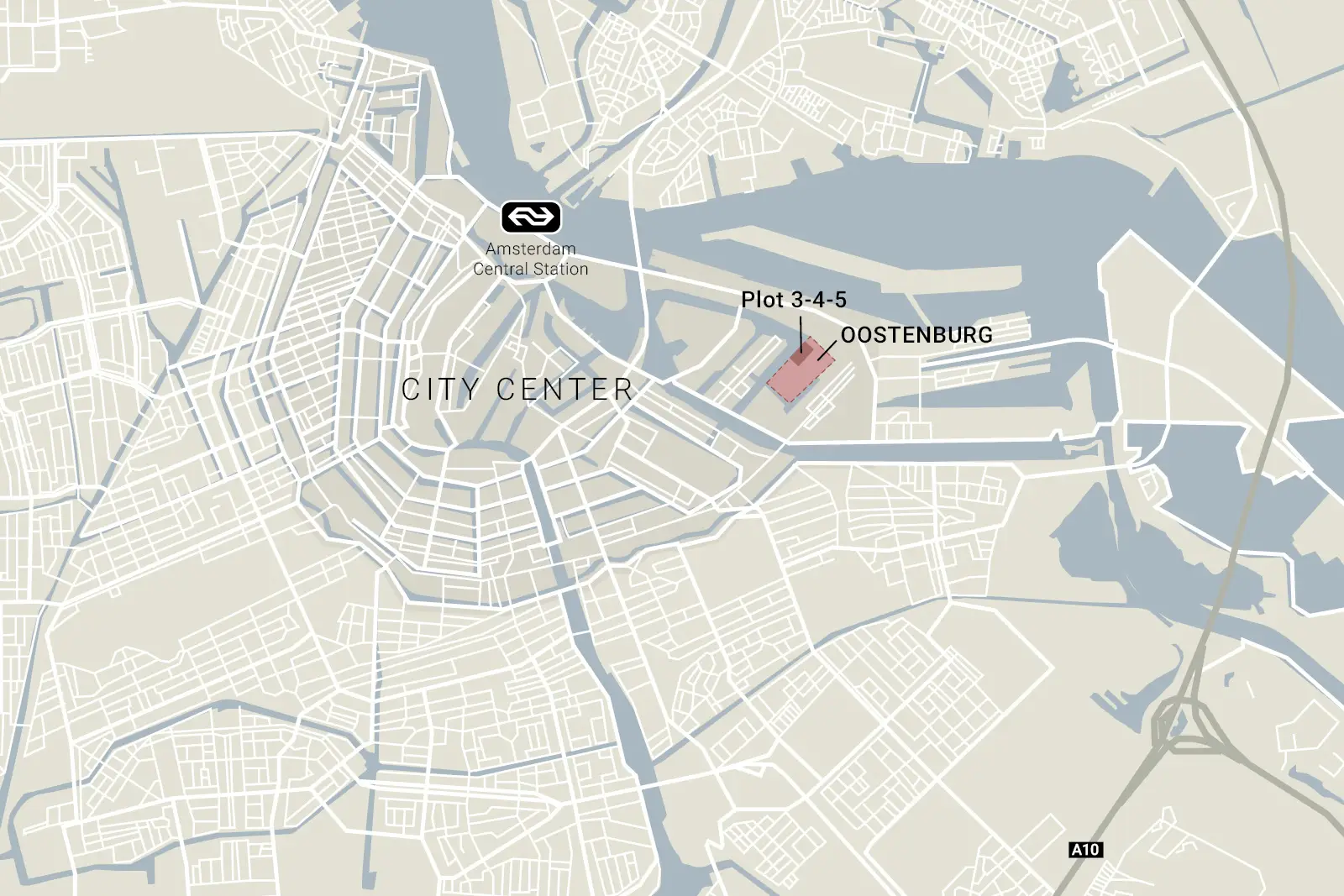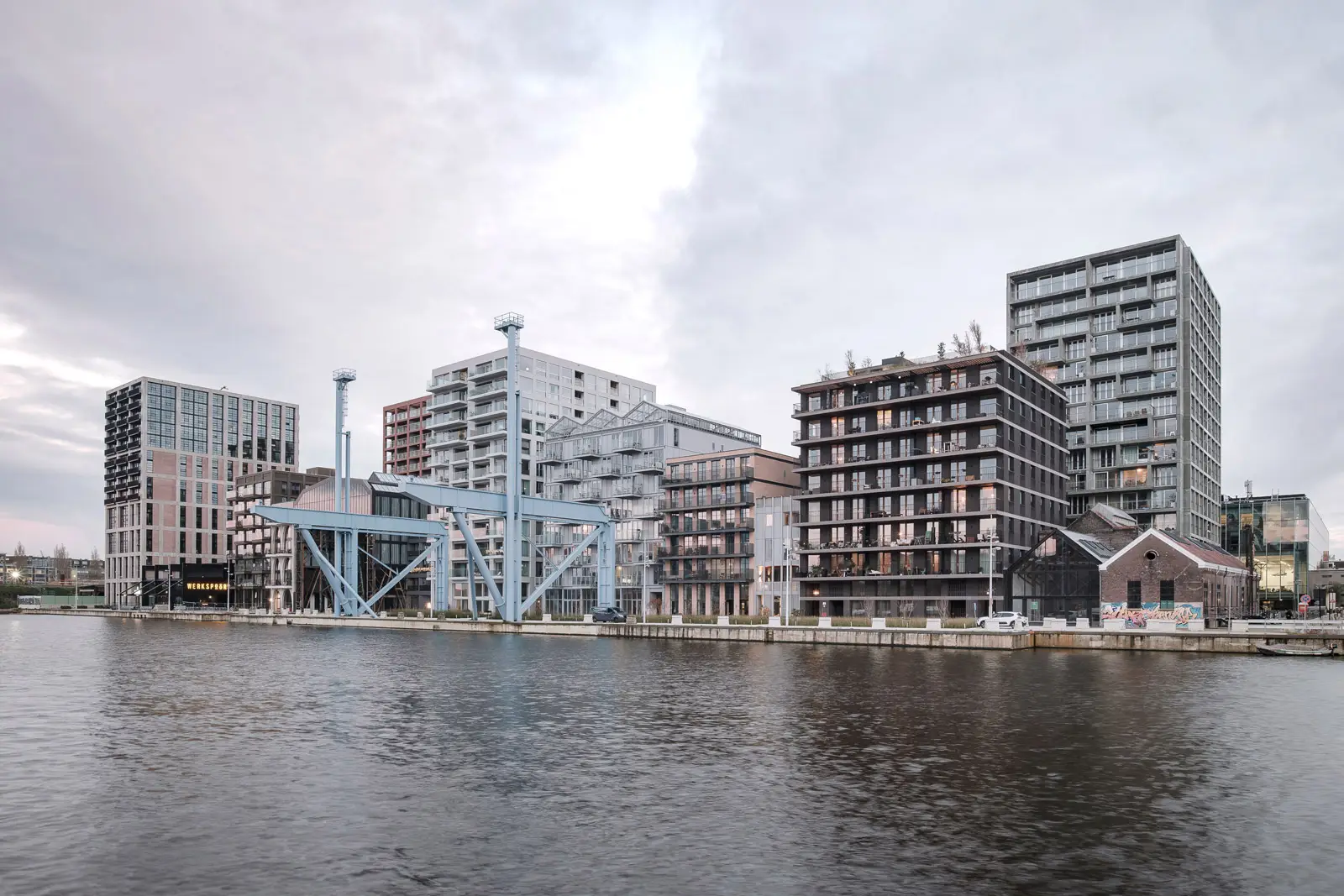This historical shipyard redevelopment into a high-density mixed-use area reveals Amsterdam’s’ historical layers. A sturdy wharf floor with ample planting provides a counterbalance to the contrasting buildings echoing the industrial past.
Oostenburg, an historical industrial island in the lee of Amsterdam’s city centre, is transformed into a lively mixed use residential district. Like many islands, Oostenburg as an isolated area has had the chance to develop its own identity. From 1660 to 1800, the VOC shipyards were located here. After that, Oostenburg remained an industrial place. At the beginning of the 20th century the five Van Gendthallen were built, for the Werkspoor-Stork engineering works.
The block-shaped buildings on Oostenburg refers to the industrial past. The public space provides a counterbalance to the contrasting buildings. The wharf floor, which lies beneath the entire plan, shows coherence to reinforce the identity of the area. A total of 1.500 apartments are designed in a high-density area with narrow ample planted green streets. To give new residents the opportunity to appropriate a place in this density, we opted for soft boundaries between built and open space. In addition to soft boundaries, allowing for social contact. In soft city meeting each other is not directive, not forced. Spaces are not pre-programmed, but ‘meeting’ is organically intertwined in every nook and cranny of the shared space. This concept of the soft city is derived from the ideas of city planners Jan Gehl and David Sim.
On three former harbour islands in Amsterdam, all kinds of urban design ideas are close to each other. The island of Kattenburg is dominated by large, half-height, closed housing blocks: 70’s modernism. Wittenburg has bouncy, 80’s social housing – effective because it alleviated the housing shortage, but with an abundance of hard-moist concrete and plastic frames. And at Oostenburg, a mix of 19th-century railway halls has been supplemented with new residential towers that reach almost 50 meters into the air – the result of the recent, explosive demand for living space and high land prices. This new, densely built-up part contrasts with the low expanse of industrial monuments such as the Van Gendthallen.
The focal point in the new residential area on Oostenburg is an old work track hall by architect G.J. Longwood from the early twentieth century, which has been stripped down to its steel palings. The hall turns into a glass-enclosed public space, a covered square, without programming, open to everything. Where the neighbourhood will soon determine what its story will be in this new form of density, and which can change with the wishes of the times. We designed and engineered the building completely in 3D and helped the contractor in BIM draft work, together with our advisors, within the given budget and timing.
PROJECT DATA
Client:
VORM Ontwikkeling BV
Program:
approx. 50.150 m2 GFA
approx. 594 apartments
Commercial facilities
Offices
Status:
Completion 2023
In collaboration with:
Workshop Architects, BETA Architects,
Space Encounters, LOLA Landscape Architects
FLUX Landscape Architecture,
Buro Bouwfysica
Team:
Ewout de Jager, Valentijn Kortekaas,
Malgorzata Kowalczak, Heleen Reedijk,
Alice Shead, Cristina de Talavera Gawronska,
Liwen Zhang, Chris Zwiers
Photography:
Valentijn Kortekaas
Roos Aldershoff


















